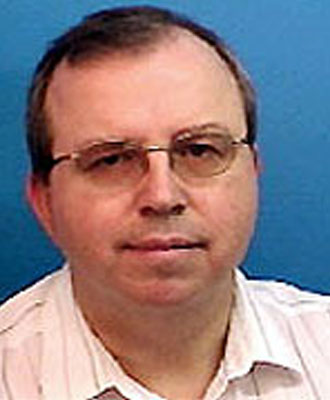Abstract
OVERVIEW: The Beaufort Mackenzie Basin (BMB) is emerging as a major potential source for the supply of future North American energy demands. The BMB has always been touted for its resource potential, however, as this paper will show, there have been significant enhancements in the basin's perceived potential via new 3D seismic surveys and a fresh look at previous exploration data. The result is broadly improved resource potential and recognition of several new world-class play types for the BMB. These plays, in conjunction with renewed exploration efforts, innovations and cost reductions in Arctic operations, potential for a Mackenzie Valley pipeline and favourable North American supply and demand forecasts, establish the BMB as a significant emerging petroleum province.
The Mackenzie delta is located in Northern Canada, in the easternmost Arctic Ocean east of the North Slope of Alaska. The Mackenzie River drainage is the second largest in North America and covers an area of roughly 697,000 square miles. It discharges into the Arctic Ocean at a rate of 9,820 cubic yards per second. This compares to the largest North American river system, the Mississippi River, with a drainage area of 1,247,000 square miles and a discharge rate of 22,970 cubic yards per second.
EXPLORATION HISTORY: Exploration drilling began in the BMB in the mid 1960's. Over the next 25 years 189 exploration wells, 130 onshore and 59 offshore, were drilled resulting in the issuance of 48 Significant Discovery Licenses (SDL's). Of these discoveries 29 SDL's are offshore with a total reserve estimate of 3.0 TCF of gas and 1.5 BBls of oil, and 19 SDL's are onshore with a total reserve estimate of 6.0 TCF of gas and 250 MBls of oil. The current (1990's) total estimate of potential recoverable reserves in the Beaufort Mackenzie Basin stands at 54 TCF offshore and 13 TCF onshore (NEB, GSC, CGPC).
These reserve estimates demonstrate the commercial importance of the BMB, particularly in view of current North American gas markets. With the potential for completion of a Mackenzie Valley pipeline by 2008, the BMB is well positioned to emerge as an important source of supply. These factors led to a resurgence of exploration and development activity in the BMB since 1999. Three years of Federal and Inuvialuit licensing has resulted in the issuance of 20 new Exploration Licenses (EL's) covering approximately 3,000,000 acres. Since 1999, Industry has acquired fifteen new 3-D seismic surveys along with several thousand kilometers of new 2-D data. Seven new wells have resulted in two significant discoveries.
A FRESH LOOK: Analyses of new 3-D seismic surveys and a fresh look at well data has significantly improved the estimated potential of the basin. Several new Tertiary play types have been identified for the BMB, and 3D is helping to clarify several long-standing difficulties with complex structural and stratigraphic interpretations. New geochemical analyses have identified several rich source rock intervals in addition to the historically recognized, somewhat limited Richards sequence.
NEW PLAYS: The 1800 km2 of high-resolution 3D seismic data acquired by Devon Canada in the shallow offshore Beaufort Sea during the summers of 2001/2002, plus an additional seven onshore 3D surveys and seven exploration wells drilled since 2000 have resulted in the definition of five (5) new Tertiary play types, identification of new prospects in previously defined plays and a better understanding of regional tectonics and depositional environments. The new plays include a DIAPIR FLANK PLAY(see Figure 1), CANYON-FILLING SLOPE CHANNEL/ LEVEE/ FAN PLAYS, BASE-OF-SLOPE & BASIN FLOOR FAN PLAYS, UNCONFORMITY SUBCROP PLAYS, and WRENCH-RELATED STRUCTURAL PLAYS IN NEW ZONES.
As an example, flattened 3D data shows a major canyon system with multi-phase down cutting and infilling. Total canyon thickness is on the order of 1000 meters, with at least three phases of infill. The amalgamated width is approximately 20 km, draping over two structural ridges to the east and infilling lows between them. The Canyon-filling Slope Channel/ Levee/ Fan Play consists of multiple stacked and offset channel/ levee/ fan deposits with a combination structural drape and stratigraphic pinchout forming the trap. An offset well on the southern fringe penetrated a portion of the fill and tested 7 MMCF/d & 120 BOPD from an Upper Richards channel sand. AVO indicates probable gas-charged sands within this upper Richards complex. Worldwide analogies include recent major discoveries at the Girassol field in Angola (Beydoun et al, 2002), the Zafiro field in Equatorial Guinea (Shirley, 2003), the Bonga field in Nigeria (Chapin et al, 2002) and numerous examples in the deepwater Gulf of Mexico.
OPERATIONAL INNOVATIONS: Recent innovative operational technologies decrease time, increase safety and significantly reduce costs. Arctic class, purpose built rigs have demonstrated an average reduction in drilling time by 25%. Large service rigs have been utilized for shallower onshore wells to reduce mobilization costs and to reduce the environmental footprint. In the offshore, innovative drilling and well control systems will dramatically decrease well costs and increase drilling seasons, while maintaining strict environmental safeguards.
CONCLUSION: This combination of new exploration data, world class plays, operational innovations, a developing infrastructure and long-term North American gas demand are behind the recent surge in exploration activity, and establish the BMB as an emerging production province for Canada.
Biography
Christopher L Bergquist, P. Geol. is an Exploration Geologist at Devon Canada-Frontiers. He obtained a BA (Earth Sciences) in 1976 from Dartmouth College, of the USA. Chris has worked 25 years in exploration and development, in both clastics and carbonates. He started as a seismic data processor with Phillips Petroleum, and then joined Gulf Oil Corporation for 20 years. His first assignments were in the GOM and West Texas, then the Cameroon, West Africa and finally 14 years throughout Canada and other international. He subsequently consulted on a China project and in the Mackenzie Delta for 3 years, and currently is with Devon Canada in the Beaufort Mackenzie basin where he has ten years overall expertise. Current areas of interest include deep-water reservoirs, basin analysis and surface geochemical prospecting.





